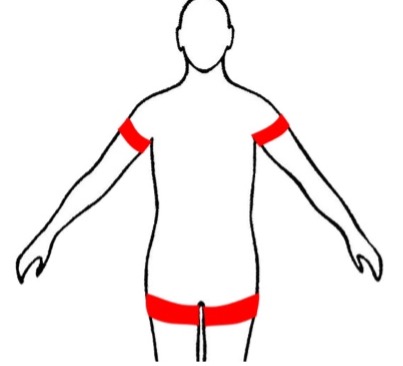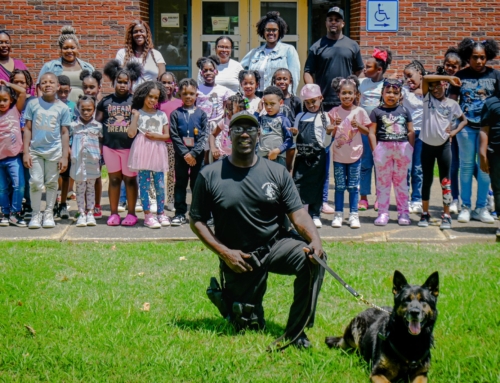
Last time we covered fatigue state training and specifically how you can use this as a part of your training routine. This time, we are going to dive into the topic of blood flow restriction training or BFR. BFR is a technique developed by Dr. Sato out of Japan and is credited with creating the first commercially available BFR device (KAATSU Device) and BFR certification for professionals. KAATSU was used by some of the biggest European bodybuilders of the day back in the 70s – 80s. BFR did not gain real exposure in the US until 2014 when ESPN did a story on how a PT in the US Military was using it to accelerate the recovery and rehabilitation of soldiers injured in battle. Johnny Owens (often credited with the development of BFR) was using BFR at the Center of the Intrepid because he was seeing the impact on the outcomes he was having with injured soldiers and how it was accelerating their return to the battlefield.
Since this time, there has been a tremendous amount of research done on BFR, the efficacy and safety of it as well as what protocols are. There are also a lot of misconceptions about BFR. This article is too limited to get into all of it, but I will try to address most of the misconceptions.
What is BFR and how does BFR work? BFR is the use of cuffs placed at four specific locations on the body (depicted) and only those locations. When the cuffs are tightened, this allows blood flow into the muscle, but not out (it block venous return). When done in combination with exercising at low loads (30-40% one rep maximum) for high reps, this causes a hypoxic state of the muscle (starved of oxygen). When you continue to exercise in this state, the muscle ends up recruiting more muscle fibers to complete the task. This is huge because you traditionally only see this level of recruitment with training at very high loads which can increase your risk for lifting injuries and cause joint pain.

When you continue to exercise with the cuffs on and the muscle is in this hypoxic state, then this causes a series of hormonal responses by the body. First is the release of growth hormone and IGF-1 (insulin growth factor 1). These two hormones accelerate the healing and muscle growth process. There is also the suppression of myostatin which is a hormone that inhibits muscle growth. The combination of the increased motor unit recruitment and high-level release of GH and IGF-1 means that you experience muscle hypertrophy (growth) in 3 weeks versus traditional training which takes 8 weeks! Twice as fast with less stress on your joints.
The beauty of BFR is that it can also be added to your cardiovascular routine. Studies show you can add BFR on a recumbent bike, training at 50% of your VO2max and have a significant increase in your VO2max. Using traditional training, you would have to train at 80% VO2max in order to get the kind of VO2max gains that you get when you train with BFR.
I use BFR a ton for my BJJ athletes. Below is just some of the training I do with BFR to improve explosive power and strength:
- Doing the basics – shrimping/hip escapes, technical get up, grip fighting, sprawling, bridging
- Explosiveness – single leg shots, double leg shots, arm drag to take the back, sweeps from guard
If you combine this at the end of the training session, it will take your session to a whole new level with less stress on the joints. In addition, BFR can be added to your strengthening routine. This will help to reduce the wear and tear on your joints will helping to still build strength, endurance and power traditionally only gained with heavy resistance training.
If you would like some more ideas on how you may incorporate BFR into your training, feel free to reach out to me at tnessler@readyrebound.com. Next time, we will cover the importance of recovery and how this impacts performance and preventing injuries in affecting an arrest.

Trent Nessler brings a wealth of physical therapy and academic research to his role as President of Ready Rebound Vitality.
Trent is the founder and developer of the ViPerform AMI™ & ViMove+ AMI™, ACL Play It Safe and Run Safe. He holds a bachelor’s degree in exercise physiology, a master’s in physical therapy, and a doctorate with a focus in biomechanics and motor learning.
Dr. Nessler has been a sports medicine physical therapist for 25+ years and is co-developer of a 3D movement assessment that is used by more than 450 pro teams, colleges and organizations and which has been used to assess over 40,000 athletes in the U.S.
A published researcher, and an author of How to Build a Badass Firefighter, Trent speaks internationally on the topic of ACL (anterior cruciate ligament) and injury prevention and serves as a consultant for professional teams and organizations.
As a sports physical therapist, avid weight lifter for more than 40 years and competitive Brazilian Jiu Jitsu brown belt, Dr. Nessler is always looking for ways to apply the latest science to optimize outcomes and enhance athletic performance.
To Find Out More, Visit https://readyrebound.com/








Get Social